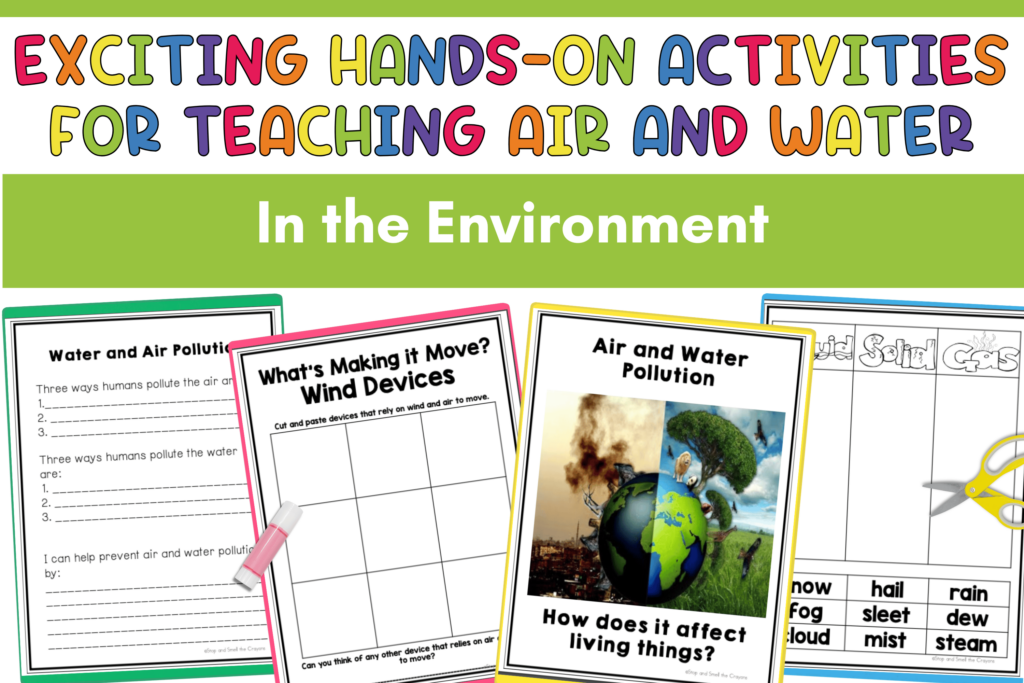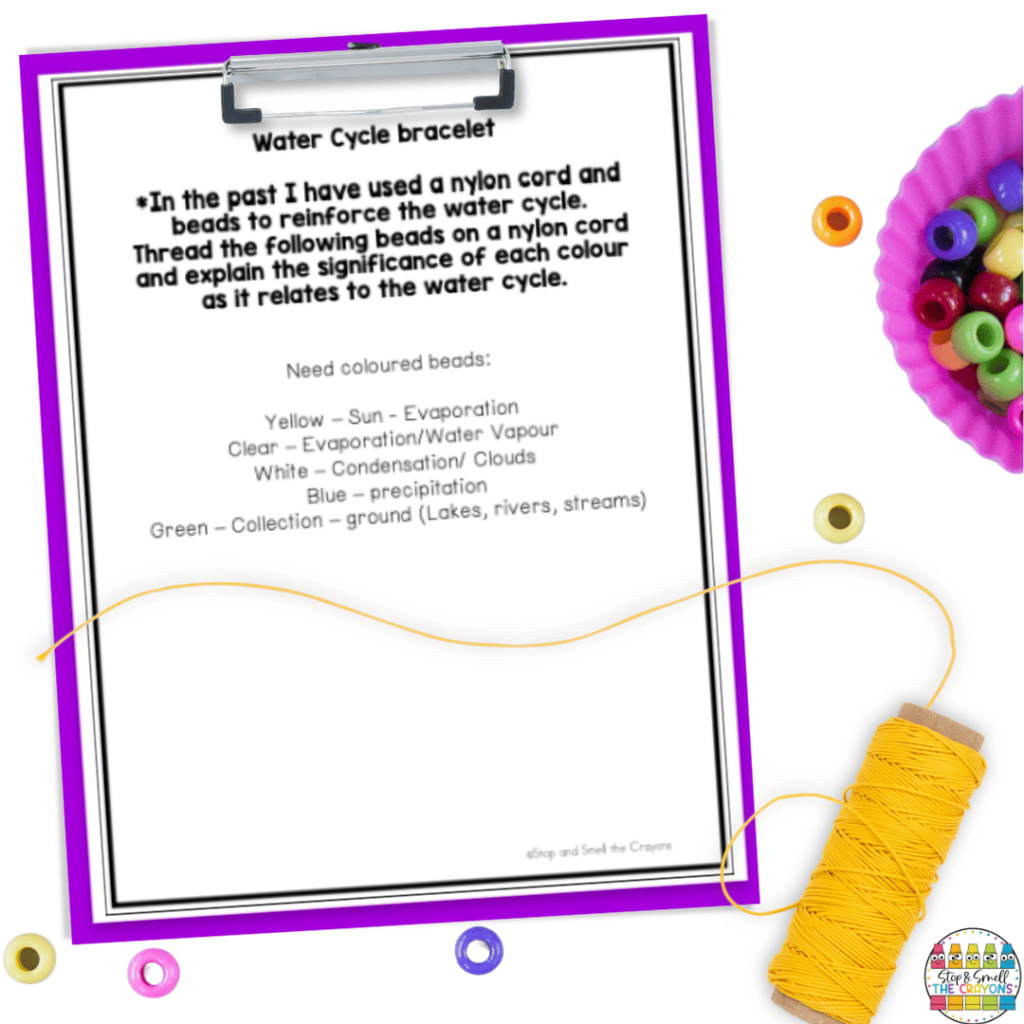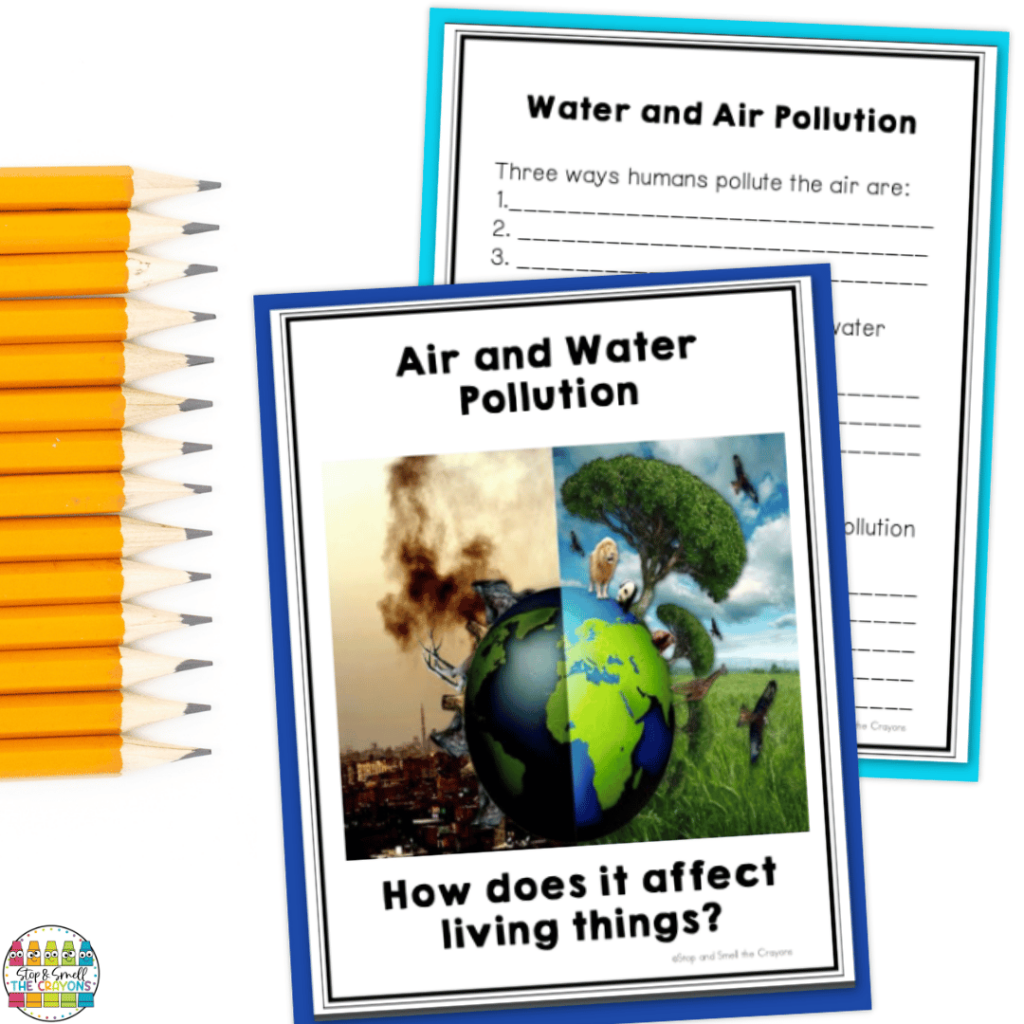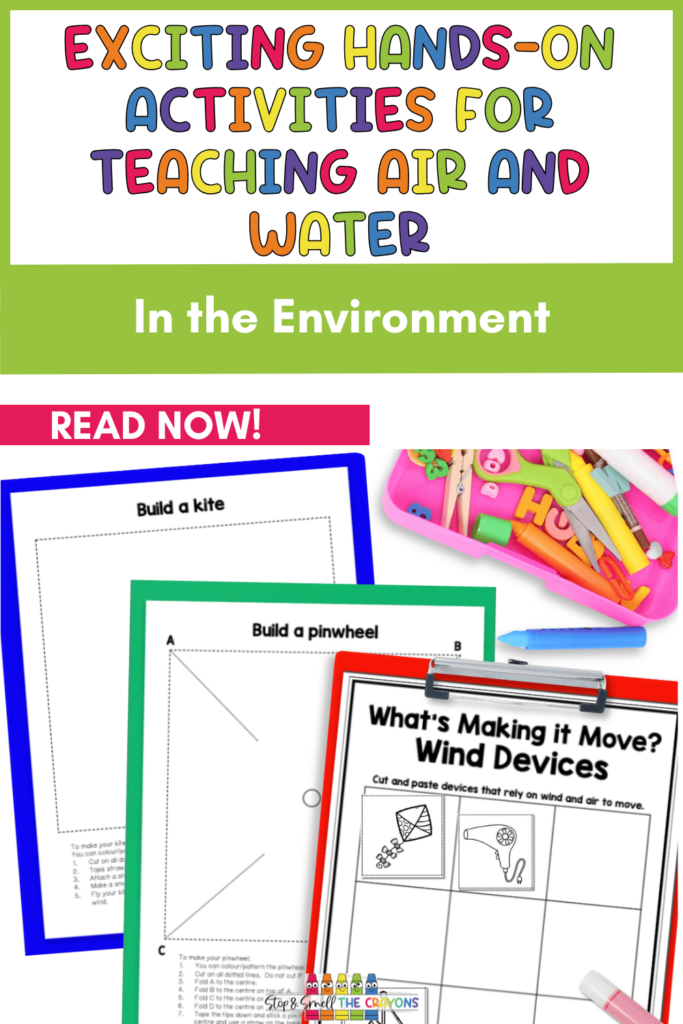Air and water are two things we rely on every single day, yet they often go unnoticed. That is, until we stop and really explore their role in our world. That’s exactly why I love diving into my air and water in the environment unit! It’s a journey through earth science that helps my students see, feel, and even experiment with these essential elements of our planet. This unit is packed with activities that bring science to life. My students don’t just learn about air and water; they experience them in action! Each lesson connects back to the real world in a way that sticks. Let’s dive into the activities that make this unit so engaging, ensuring our students develop a deeper understanding of air and water in the environment and their impact on our daily lives.

Making Earth Science Hands-On and Engaging
When it comes to teaching air and water in the environment, I’ve found that the more hands-on the learning, the more engaged my students become. Earth science is about experiencing the world around us, making observations, and discovering how air and water shape our daily lives. That’s why I prioritize activities that get my students thinking, questioning, and experimenting.

By allowing our students to see condensation form on a mirror, feel the force of moving air with a balloon-powered experiment, or track the water cycle in a bag taped to our classroom window, they gain a deeper understanding of these essential natural elements. When learning is interactive, our students connect with the concepts. This helps them retain information in a meaningful way.
Bringing in hands-on activities also encourages critical thinking and problem-solving. When our students build their pinwheels to explore wind power or test how different surfaces affect evaporation rates, they see science in action. These experiences make them curious, and that curiosity fuels deeper learning.
By making earth science hands-on, we help our students move beyond abstract ideas and into real-world applications. They aren’t just learning about air and water in the environment. They’re becoming young scientists, ready to explore the world around them.
Air and Water in the Environment Unit Breakdown
Now that we’ve set the stage, let’s explore the activities that bring air and water in the environment to life! I designed each lesson to help our students experience scientific concepts in a way that’s interactive and easy to understand. Whether they’re investigating how air moves, exploring the states of water, or experimenting with the water cycle, these activities make learning both fun and meaningful.
The Air Around Us: What Is Air?
To introduce air, I start by asking my students a series of questions to get a discussion started: Does air weigh anything? How do we know it’s around us if we can’t see it? This leads to hands-on observations where we explore how air takes up space and has mass. One of the demonstrations involves blowing up a balloon and discussing where the air comes from and where it goes when released.
We also discuss how air moves by observing how the wind affects everyday objects like trees, flags, and wind chimes. I have my students list different things that rely on air movement, such as kites, weather vanes, and wind socks, reinforcing the concept that air is always present and active.

Moving Objects with Air
To further explore how air moves, I guide my students through a variety of engaging activities:
- Building a Kite – I have my students create their own kites using simple materials. Then, they test them outside to see how air lifts and moves objects.
- Making a Pinwheel – By following a template, my students construct pinwheels and observe how even a small breath of air can make them spin.
- Balloon on a String Experiment – We attach an inflated balloon to a straw threaded onto a long piece of floss. My students then hold each end of the floss and release the balloon to watch the force of the escaping air propel it forward. This demonstrates how air can exert pressure and create motion.
- Paper Airplane Race – This is a well-loved one by my students! They fold and design their own paper airplanes. While doing so, they experiment with different designs to see how air resistance affects their flight.
These activities help my students visualize how air moves objects and understand the role of wind in our environment.
Air Temperature and Thermometers

To explore how air temperature changes, I have my students track temperature over a day or week, recording their observations. We discuss how thermometers work. I show them that the liquid inside rises when heated and falls when cooled. I ask guiding questions like “How does temperature affect living things?” and “What happens to people and animals during extreme weather conditions?”
One of our favorite demonstrations involves placing a balloon over the mouth of a bottle and immersing the bottle in hot water. I have my students observe how the balloon inflates as the air inside expands with heat. This reinforces the concept that warm air takes up more space than cold air.
Water Around Us: Identifying Sources of Water
We begin our exploration of water by reading Magic School Bus: At the Water Works and discussing where water exists in our environment. Together, we create a class chart categorizing natural versus human-made water sources. Then, I have my students brainstorm places they have seen water, such as lakes, streams, reservoirs, and water treatment plants. This helps them recognize how water moves through the environment and supports life.

Forms of Water in the Environment
One of the key lessons in my air and water in the environment unit is understanding that water can exist in three states: solid, liquid, and gas. To bring this to life, we conduct simple experiments that demonstrate these states:
- Solid Water – During this one, my students observe how water turns to ice when frozen. We discuss real-world examples like snow, hail, and frost.
- Liquid Water – We explore different liquid water sources, from rain to lakes and streams. Then, we chat about how it flows and takes the shape of its container.
- Water as a Gas – Using a kettle, my students watch as steam rises. As we watch, I hold a cool plate above it to show them how condensation forms. This activity shows how water changes from gas back to liquid.
To reinforce this concept, we also make a cloud in a jar by placing warm water in a container. We then cover it with a lid and place ice on top. My students watch as condensation forms, mimicking real cloud formation.
The Water Cycle in Action

Understanding the water cycle is an essential part of this unit, as it helps students grasp how water moves through our environment. By using a variety of approaches, I ensure that students of all learning styles can visualize and understand the journey of water. I use multiple activities to help my students see it in action:
- Water Cycle Bracelet – I have my students thread different colored beads onto a cord. Each bead represents a stage of the water cycle (yellow for the sun, blue for precipitation, clear for evaporation, etc.). This visual reminder helps reinforce the continuous movement of water through our environment.
- Water Cycle in a Bag – For this activity, I have my students fill a sealed plastic bag with water and tape it to a sunny window. As the heat causes evaporation, condensation forms, and precipitation drips back down, illustrating the full cycle.
- Water Cycle with a Kettle – We boil water and use a plate to catch the condensation, demonstrating evaporation, condensation, and precipitation in real time.
Living Things Depend on Air and Water
To connect air and water to daily life, we watch Magic School Bus: Catches a Wave. Then, we discuss why clean air and water are essential for all living things. I have my students brainstorm ways we use water and air every day, such as drinking, cooking, and breathing.
We also examine what happens when air or water becomes polluted. Students analyze pictures of polluted environments and discuss the consequences for people, animals, and plants.

Air and Water Pollution: The Importance of Conservation
One of the most impactful parts of the air and water in the environment unit is learning about pollution and conservation. We talk about the sources of air and water pollution, such as oil spills, industrial waste, and improper disposal of household chemicals. Many of my students are often shocked to learn how pollution affects ecosystems and human health.
To make this topic more interactive, we explore:
- Tracking Water Usage – This is where my students track their own water use for a day and identify small changes they can make to reduce waste.
- Where Water Goes – In this activity, my students trace where water travels after they flush a toilet or wash their hands. This helps them see their role in keeping water clean.
- Water Conservation Chart – We create a classroom chart showing different ways to conserve water, from turning off faucets to taking shorter showers.
Exploring Air and Water in the Environment in Earth Science
Teaching about air and water in the environment through hands-on experiences makes earth science exciting and meaningful for our students. Our students develop a deeper understanding of the world around them by investigating air movement, experimenting with water in its different states, and exploring the water cycle. These activities spark curiosity, encourage problem-solving, and help our students see their role in caring for our planet. They’re actively engaging in discovery-based learning. When we make air and water in the environment interactive, we’re inspiring the next generation of scientists and environmental stewards.
A Year of Exploration in Science
If you’re looking for even more ways to bring science to life for your students, you’ll definitely want to check out Second Grade Science: A Year of Exploration. This post is packed with engaging, hands-on lessons that make learning exciting while covering key science concepts.
It dives into a full year of second-grade science. It includes everything from exploring air and water in the environment to investigating animals, matter, and simple machines. The lessons are designed to keep your students curious, asking questions, and discovering science through real-world connections. Whether they’re testing out the water cycle, building simple machines, or exploring how animals adapt to their environments, these activities make complex ideas easy to grasp!
Save for Later
Remember to save this post to your favorite Science Pinterest board for quick access to this air and water in the environment unit!
